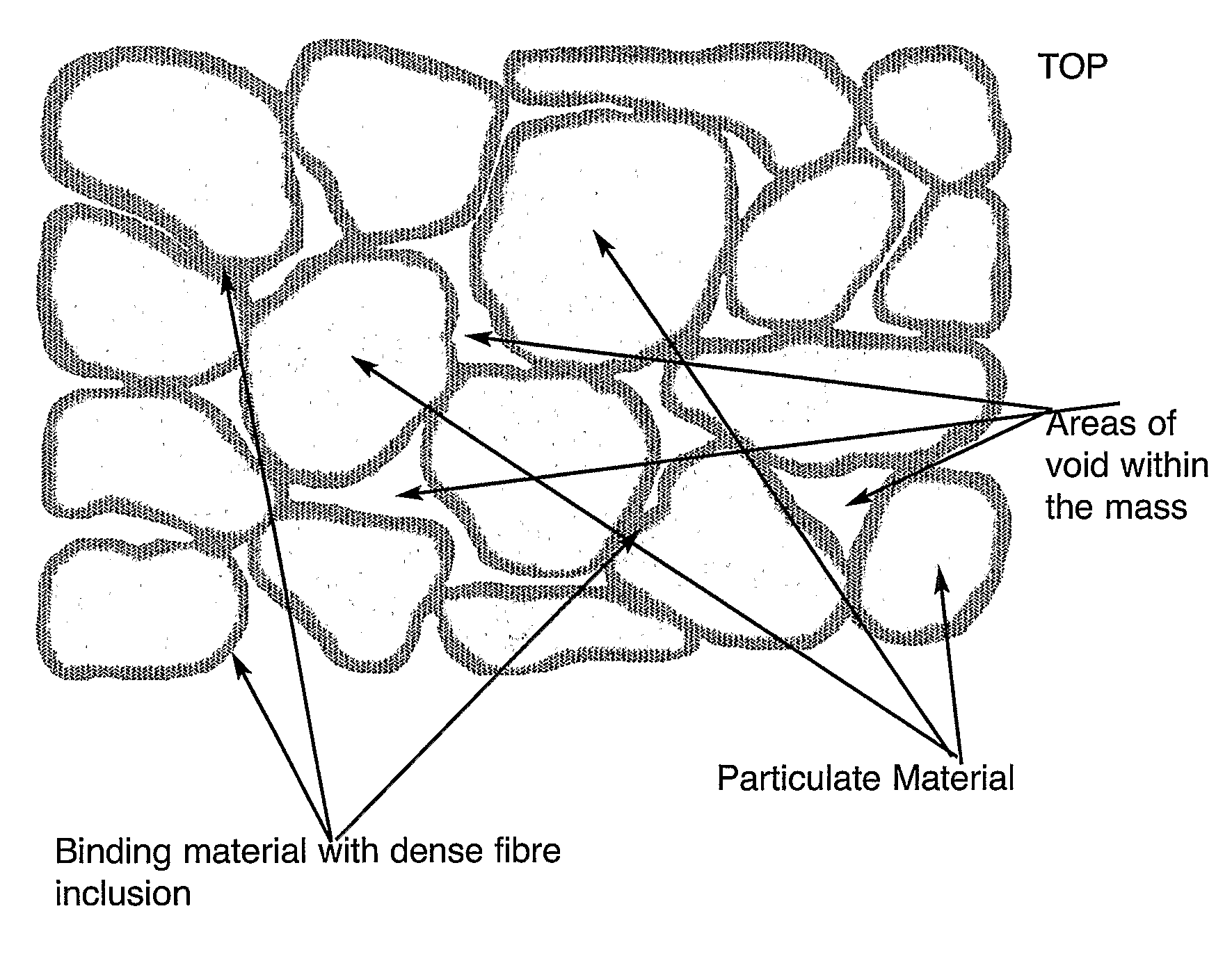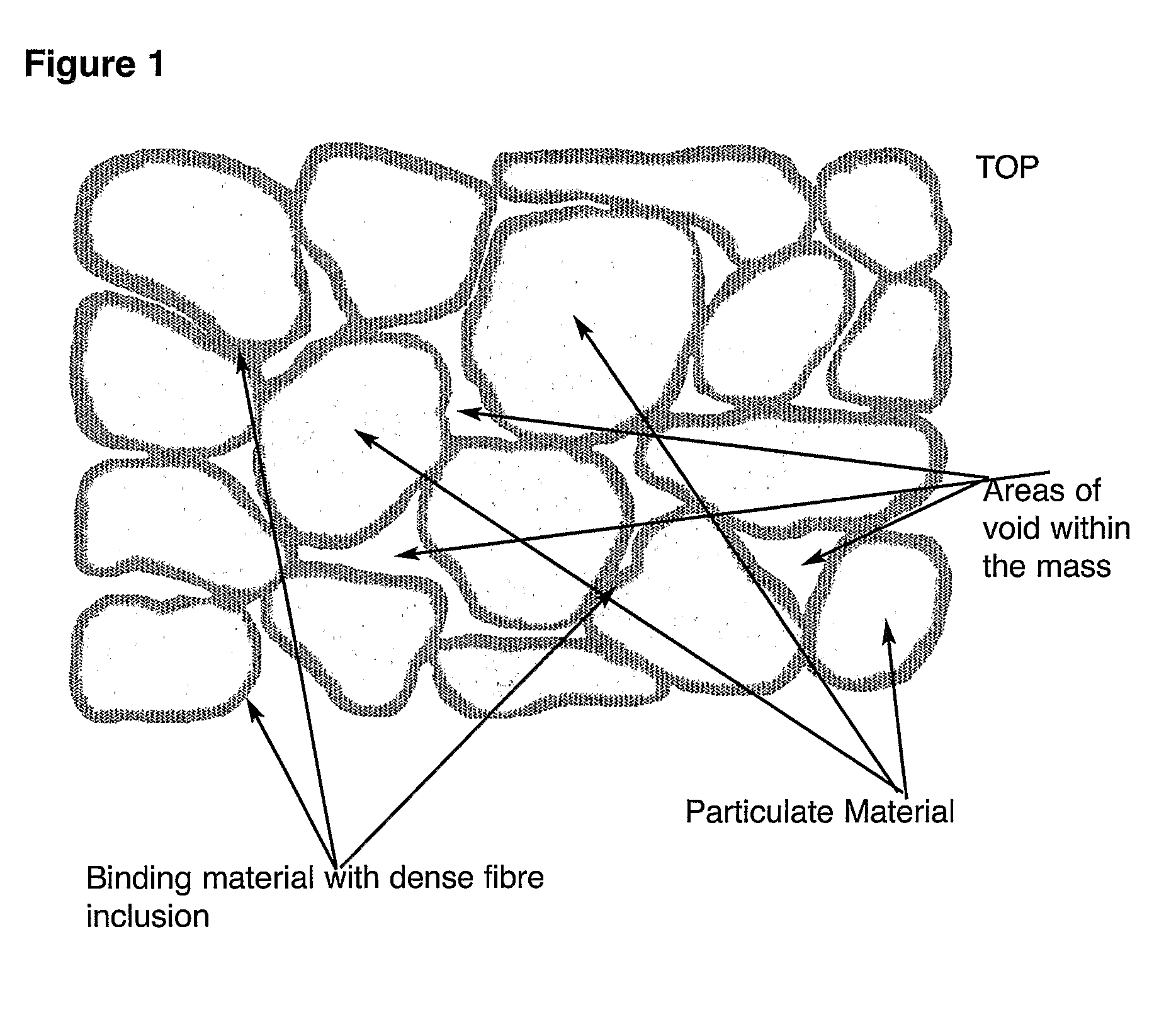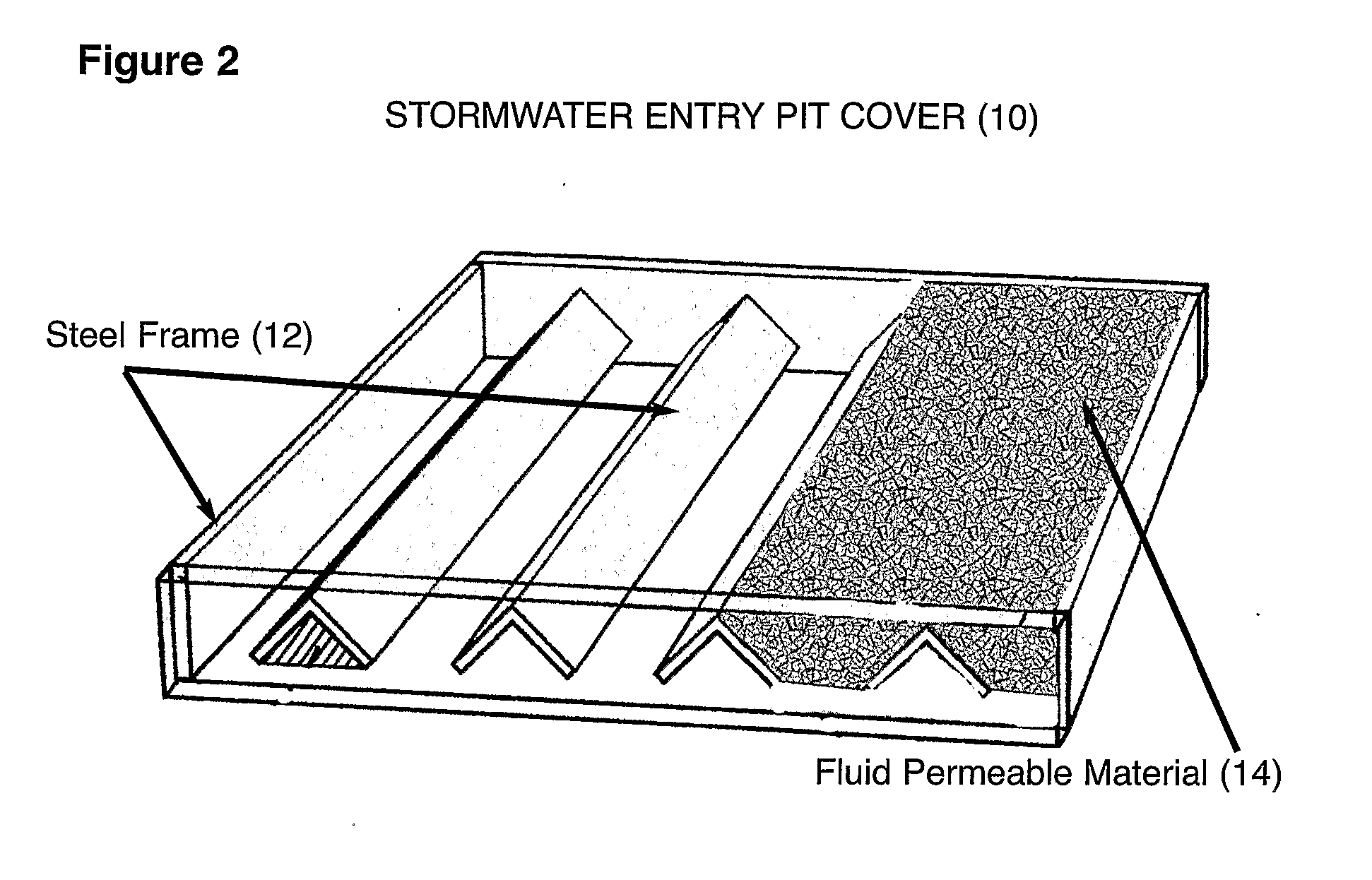Fluid Permeable Composite Material and Process for Same
a composite material and fluid permeable technology, applied in the direction of single unit paving, temporary paving, tyre parts, etc., can solve the problems of concrete and fired clay materials, impermeability to fluids, in particular water, and unsuitability for urban water resources
- Summary
- Abstract
- Description
- Claims
- Application Information
AI Technical Summary
Benefits of technology
Problems solved by technology
Method used
Image
Examples
example 1
Binding Agent Composition
[0034] Percentages are expressed in percentage by weight as are all percentages herein unless expressly specified otherwise.
[0035] Part 1
[0036] Methacrylic copolymer, with a hydroxil functional value of about 150 KOH / g (33.75%) is added to n-butyl acetate (33.75%). This mixture is then added to the mixed constituents of Part 2.
[0037] Part 2
[0038] In a separate vessel, the following are combined: n-butyl acetate (9%), 1,6Hexamethylene diioscyanate homopolymer (HDI Homo) (approx. 13.5%), hexamethylene diioscyanate (0.005%)
[0039] Part 3
[0040] The glass fibre (10%) 3 mm fibre size is mixed into the mixture of Part 1 and Part 2.
[0041] In this binding agent composition, substitutions of various chemicals may be made. For example, acrylic polymers based on methacrylates are used as cross-linking polyols. Such acrylic polymers are suitable as they are hard and densely branched, providing an extremely strong and durable material not obtainable with traditiona...
example 2
Particulate Materials
[0045] A variety of particulate materials or aggregates may be used in the fluid permeable composite material, inclusive of various rock types and ceramics. Suitable rock types include Acid igneous granitic rocks and may be selected from Granite, Adamellite, Granodiorite, Granophyre, Rhyolite and Rhyodacite.
[0046] Also suitable are Intermediate igneous rock types and may be selected from Diorite, Porphyry and Trachyte. Basic igneous rock types may be selected from Basaltic rocks, inclusive of Basalt, Dolerite and Limburgite. Further suitable are the Metamorphic rock types and may be selected from Hornfels, Quartzite, Schist, Phyllite, Gneiss and Greenstone. Suitably also, Sedimentary rock types such as River Gravel may be used. Still more suitably, the particulate material is Basalt.
[0047] While the particulate material may be regular or irregularly shaped, the material is preferably elongate so as to provide an increased surface area to which the binding age...
example 3
Manufacturing Process of Fluid Permeable Composite Materials
[0050] A fluid permeable composite material is produced by the following process using the binding agent and particulate materials of Examples 1 and 2 respectively.
[0051] The selected particulate material is washed to remove all foreign matter from the surface of the particulate material. This preferable washing step involves immersing the material in water and vibrating or agitating it to separate out unwanted foreign matter. After removing all foreign material from the surface of the particulate material, excess water is removed from the particulate material surface by drainage. The particulate material is then dried in a rotary drier until it has a moisture content of less than 0.014%. The dried particulate material is cooled to below 30 degrees Celcius.
[0052] The cooled, dry particulate material is then pre-coated by placing the material into a rotating drum with a measured quantity of binding agent which has the vis...
PUM
| Property | Measurement | Unit |
|---|---|---|
| Length | aaaaa | aaaaa |
| Length | aaaaa | aaaaa |
| Fraction | aaaaa | aaaaa |
Abstract
Description
Claims
Application Information
 Login to View More
Login to View More - R&D
- Intellectual Property
- Life Sciences
- Materials
- Tech Scout
- Unparalleled Data Quality
- Higher Quality Content
- 60% Fewer Hallucinations
Browse by: Latest US Patents, China's latest patents, Technical Efficacy Thesaurus, Application Domain, Technology Topic, Popular Technical Reports.
© 2025 PatSnap. All rights reserved.Legal|Privacy policy|Modern Slavery Act Transparency Statement|Sitemap|About US| Contact US: help@patsnap.com



